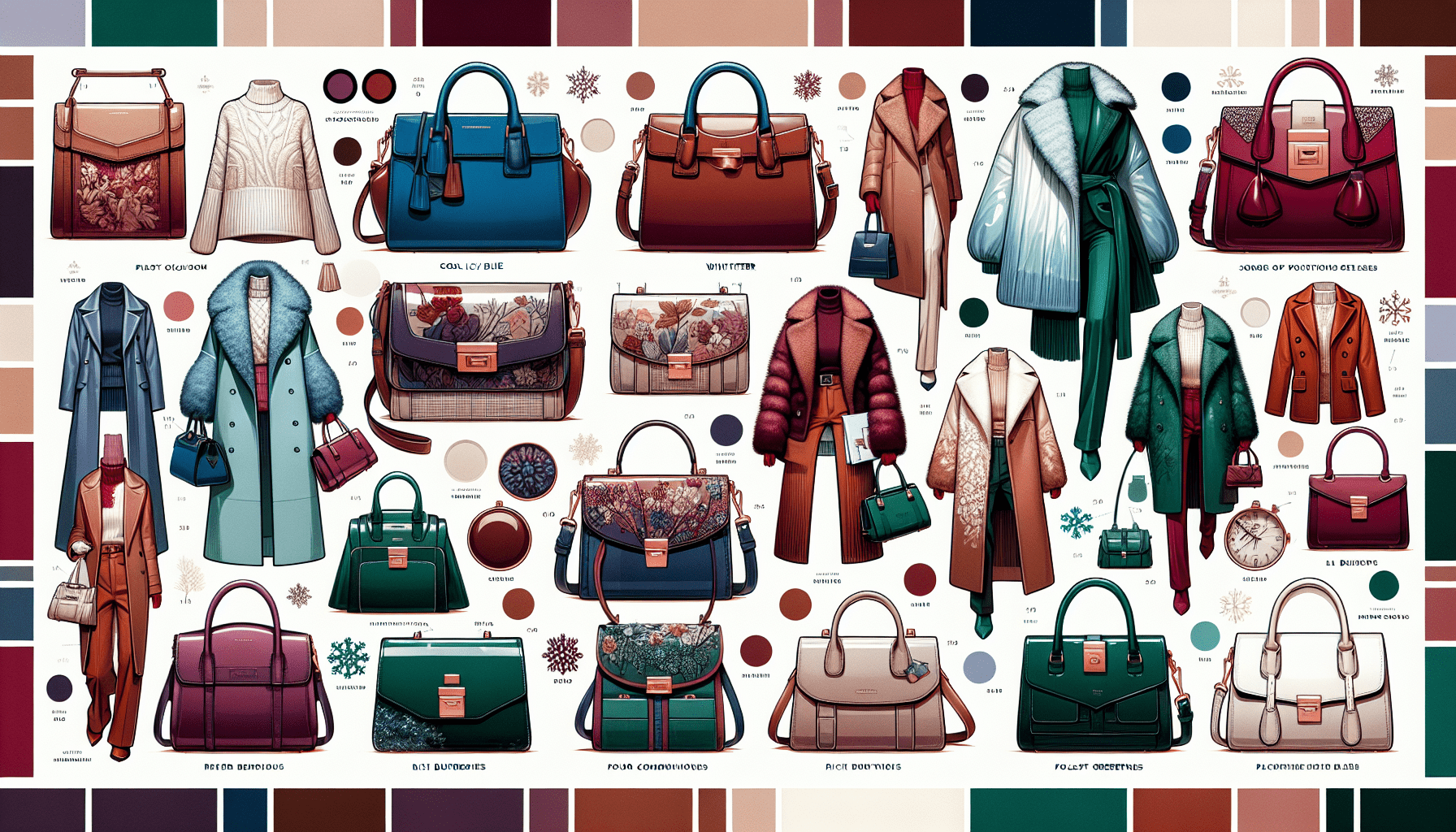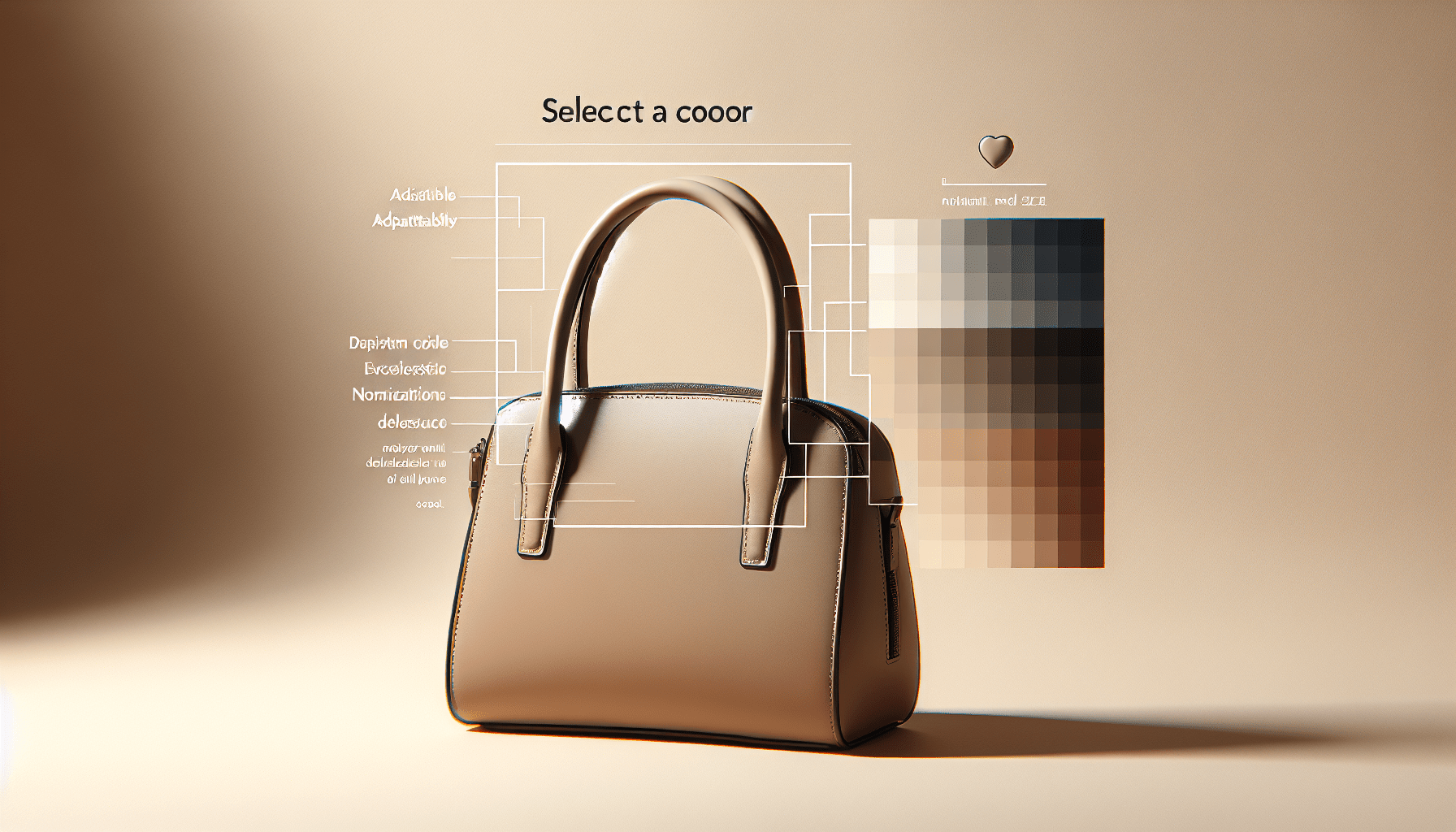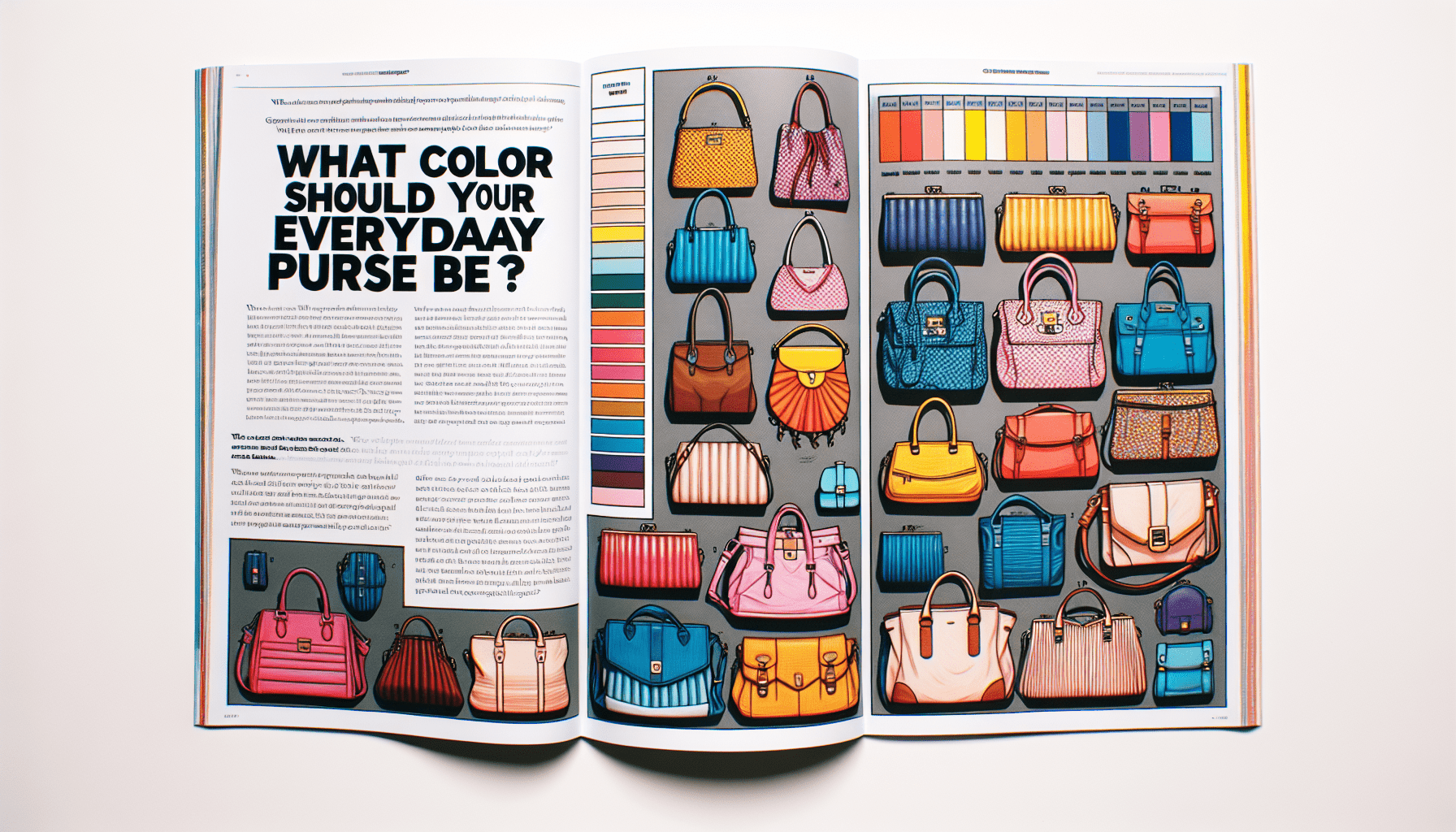Is It Acceptable To Wear Designer Knockoffs
Imagine a world where you could effortlessly rock the latest fashion trends without breaking the bank. A place where you could walk down the street, head held high, wearing a stunning designer knockoff that no one would suspect wasn’t the real deal. But is it acceptable to wear these counterfeit creations? As the debate rages on, it’s time to explore the arguments on both sides and uncover the truth behind the allure of designer knockoffs.
Understanding Designer Knockoffs
Definition of Designer Knockoffs
Designer knockoffs refer to imitation or replica versions of original designer products. These knockoffs attempt to mimic the design, style, and aesthetic of high-end fashion brands, but at a significantly lower price point.
How Designer Knockoffs are Produced
Designer knockoffs are produced using various methods, ranging from detailed reverse-engineering to copying design elements seen in original pieces. Manufacturers of knockoffs often analyze the original designs, fabrics, and construction techniques used by luxury brands to recreate similar products using cheaper materials and production processes. This results in products that closely resemble the originals but lack the quality and craftsmanship associated with the authentic designer pieces.
Differentiating Between Original and Knockoff Designs
Materials and Craftsmanship
One of the key ways to differentiate between original and knockoff designs is by examining the materials and craftsmanship. Authentic designer products are usually made from high-quality materials and crafted with precision and attention to detail. On the other hand, knockoffs may use lower-quality materials and exhibit subpar workmanship, resulting in a noticeable difference in overall quality.
Price Differences
Price can also serve as an indicator to distinguish between original and knockoff designs. Genuine designer products are known for their hefty price tags due to the quality materials, craftsmanship, and brand prestige they offer. Knockoffs, however, are typically available at a fraction of the cost, often retailing at significantly lower prices than the originals.
Packaging Details
Packaging can provide further insights into the authenticity of designer products. Original designs often come with meticulous packaging, including branded boxes, dust bags, authenticity cards, and other luxurious touches. Knockoffs may attempt to replicate these packaging details but often fall short in terms of quality, branding, or attention to detail.
Ethics of Wearing Designer Knockoffs
Effect on the Fashion Industry
Wearing designer knockoffs raises ethical concerns within the fashion industry. The prevalence of knockoffs can negatively impact fashion brands by diluting their exclusivity and undermining their revenue streams. It diminishes the value of original designs and discourages innovation, as designers may hesitate to invest in new creations if they can easily be replicated and sold at a lower price.
Laws about Counterfeit Goods
Many countries have laws in place to protect intellectual property rights and combat the production and sale of counterfeit goods, including designer knockoffs. These laws aim to uphold the integrity of original designs and protect both designers and consumers from fraudulent activities. Purchasing and wearing knockoffs can potentially infringe upon these laws, leading to legal consequences.
Implication on Original Designer’s Intellectual Property
Wearing designer knockoffs also raises concerns regarding the protection of the original designer’s intellectual property. Knockoffs exploit the creative efforts and ideas of designers without their consent, potentially violating copyright and trademark laws. Such actions devalue the designer’s work and can have long-lasting implications on their brand’s reputation and market position.
Public Perception of Designer Knockoffs
Social Stigma
Designer knockoffs have long been associated with negative perceptions in society. Some individuals view wearing knockoffs as an attempt to deceive or fake social status. Critics argue that it promotes a culture of counterfeit goods and unethical consumerism, leading to a general social stigma surrounding the ownership and use of knockoff designs.
Association of Quality and Price
There is a common belief that high-quality products come at higher price points. Original designer pieces are often associated with superior quality and craftsmanship and are seen as a representation of luxury and exclusivity. Knockoffs, being significantly cheaper, are often perceived as lower in quality and value.
Expensive Fashion vs Accessible Style
While some view designer knockoffs negatively, others argue that they provide a more accessible means to enjoy fashionable styles. The high prices of original designer items can make them inaccessible to many individuals, and knockoffs offer a more affordable alternative. Supporters argue that knockoffs democratize fashion, allowing people with limited budgets to express their style and follow current trends.
Role of Designer Knockoffs in Fast Fashion
Sustainable Fashion vs Knockoffs
The role of designer knockoffs in the fast fashion industry is a topic of debate when considering sustainability. Fast fashion, characterized by its quick production and disposable nature, contributes to environmental issues such as waste and pollution. Knockoffs, often associated with fast fashion, perpetuate the cycle by offering inexpensive replicas that are quickly discarded, further straining resources and contributing to environmental degradation.
The Effects on Environment
Designer knockoffs contribute to environmental issues in several ways. The production of knockoffs involves the use of cheaper and often lower-quality materials that have a higher environmental impact. Additionally, the shorter lifespan of knockoff items, as consumers are more likely to discard them quickly, leads to increased waste generation.
Role in Encouraging Fast Fashion Cycle
Designer knockoffs play a significant role in the perpetuation of the fast fashion cycle. The availability and affordability of knockoffs allow consumers to continuously chase trends and purchase new items without significant financial investment. This constant demand for new styles leads to the rapid production of inexpensive replicas, promoting excessive consumerism and contributing to the negative impacts of the fast fashion industry.
Designer’s Perspective on Knockoffs
Impact on Designer Revenue
Designer knockoffs pose a direct threat to a designer’s revenue. While designers invest significant time, effort, and resources into creating original designs, knockoffs can quickly flood the market at a fraction of the cost. This results in lost sales for the original designer, undermining their financial stability and hindering future creative endeavors.
Loss of Brand Value and Integrity
The presence of designer knockoffs can also erode the brand value and integrity that designers have worked hard to establish. Knockoffs, often of inferior quality, can tarnish the brand’s reputation in the eyes of consumers who may associate the subpar knockoffs with the original designer. This loss of trust and credibility can have long-lasting implications for the designer’s success.
Designer’s Reaction to Knockoffs
Designers respond to the issue of knockoffs in various ways. Some take legal action against manufacturers and sellers of knockoffs to protect their intellectual property rights. Others focus on innovation, striving to create designs that are difficult to replicate or introduce unique elements that set their products apart. Additionally, designers may educate consumers about the value of original designs, emphasizing the quality and craftsmanship that distinguish their creations from knockoffs.
Consumer’s Perspective on Designer Knockoffs
Why Consumers Opt for Knockoffs
Consumers are drawn to knockoffs for several reasons. The primary motivation is often the significantly lower price point, allowing individuals to own items that resemble luxury brands at a more affordable cost. Accessibility and availability also play a role, as knockoffs are often easier to find than the original designs. Additionally, some consumers may choose knockoffs as a way to experiment with different styles without the commitment of a high-priced investment.
Perception of Value for Money
Consumers who opt for knockoffs may perceive that they are getting more value for their money. While knockoffs may provide a similar aesthetic to designer pieces, the quality and longevity of the products may not match the original. However, for individuals who prioritize immediate style satisfaction over long-term durability, knockoffs may represent a more economical choice.
Customer’s Knowledge and Awareness about Knockoffs
Not all consumers are fully aware of the implications and risks associated with purchasing and wearing knockoffs. Many individuals are unknowingly misled by counterfeit sellers, believing that they are purchasing genuine designer items. Consumer education and awareness regarding the consequences of buying knockoffs are essential in ensuring informed purchasing decisions.
Is it Legal to Purchase and Wear Designer Knockoffs?
Legal Implications
The legality of purchasing and wearing designer knockoffs varies by country and jurisdiction. In general, the production and sale of counterfeit goods are illegal, but laws regarding the purchase and ownership of knockoffs can be more complex. While wearing knockoffs for personal use may not always be explicitly against the law, supporting the counterfeit market can have a wide range of legal and ethical ramifications.
Countries’ Individual Laws on Knockoffs
Different countries approach the issue of knockoffs differently. Some nations have stringent laws and penalties in place to combat counterfeit goods, while others may have less stringent regulations. It is important for consumers to familiarize themselves with the laws of their respective countries to understand the potential legal consequences of purchasing and wearing knockoffs.
Penalties for Buying or Selling Knockoffs
Penalties for buying or selling knockoffs can vary depending on the jurisdiction and the severity of the offense. Potential consequences include fines, imprisonment, or both. The severity of the punishment often depends on factors such as the value of the counterfeit items, the individual’s intent, and their involvement in the counterfeit market.
Alternatives to Designer Knockoffs
Investing in Quality over Quantity
One alternative to wearing knockoffs is to invest in higher-quality, non-designer items. By prioritizing quality over brand name, individuals can find well-crafted, durable clothing that can rival the longevity of designer pieces while avoiding the ethical concerns and legal risks associated with knockoffs.
Supporting Emerging Designers Instead
Another alternative is to support emerging designers and independent brands. These designers often offer unique, original designs at more affordable price points compared to established luxury fashion houses. By purchasing from these designers, consumers can encourage creativity and innovation while avoiding the ethical and legal dilemmas surrounding knockoffs.
Renting Designer Items
Renting designer items is gaining popularity as a sustainable and ethical alternative to purchasing knockoffs. Renting platforms allow individuals to temporarily enjoy designer pieces without the financial burden of ownership. This option allows for access to authentic designs at a fraction of the cost and reduces the environmental impact associated with the production and disposal of fast fashion and knockoffs.
Conclusion: Is It Acceptable to Wear Designer Knockoffs?
Summarizing All Points
The debate on whether it is acceptable to wear designer knockoffs is multi-faceted and complex. In summary, designer knockoffs are imitation versions of original designer products produced using cheaper materials and craftsmanship. Differentiating between original and knockoff designs involves considering factors like materials and craftsmanship, price differences, and packaging details.
The ethics of wearing designer knockoffs are brought into question due to their effect on the fashion industry, the existence of laws protecting intellectual property, and the implications on the original designer’s brand value. Public perception of knockoffs includes social stigma, the association of quality and price, and the balance between expensive fashion and accessible style.
Designer knockoffs play a significant role in fast fashion, but their connection to sustainability and the negative effects on the environment must be acknowledged. From the designer’s perspective, knockoffs impact revenue, brand value, and integrity, leading to various reactions by designers to combat the issue. Consumers opt for knockoffs due to lower prices, perceived value for money, and lack of knowledge about the consequences.
The legality of purchasing and wearing designer knockoffs varies, with different countries having individual laws and penalties. Alternatives to knockoffs include investing in quality over quantity, supporting emerging designers, and renting designer items.
Understanding Personal Ethics and Choices
In deciding whether it is acceptable to wear designer knockoffs, individuals must consider their personal ethics and values. This includes evaluating the impact on the fashion industry, the legality of knockoffs, the environmental consequences, and one’s own perception of value and quality.
Deciding Where One Stands on the Issue
Ultimately, the acceptability of wearing designer knockoffs is a subjective decision. It is essential to weigh the ethical, legal, and environmental implications and decide where one stands on the issue based on personal values and priorities. By understanding the comprehensive perspectives surrounding designer knockoffs, individuals can make informed choices that align with their personal ethics.




